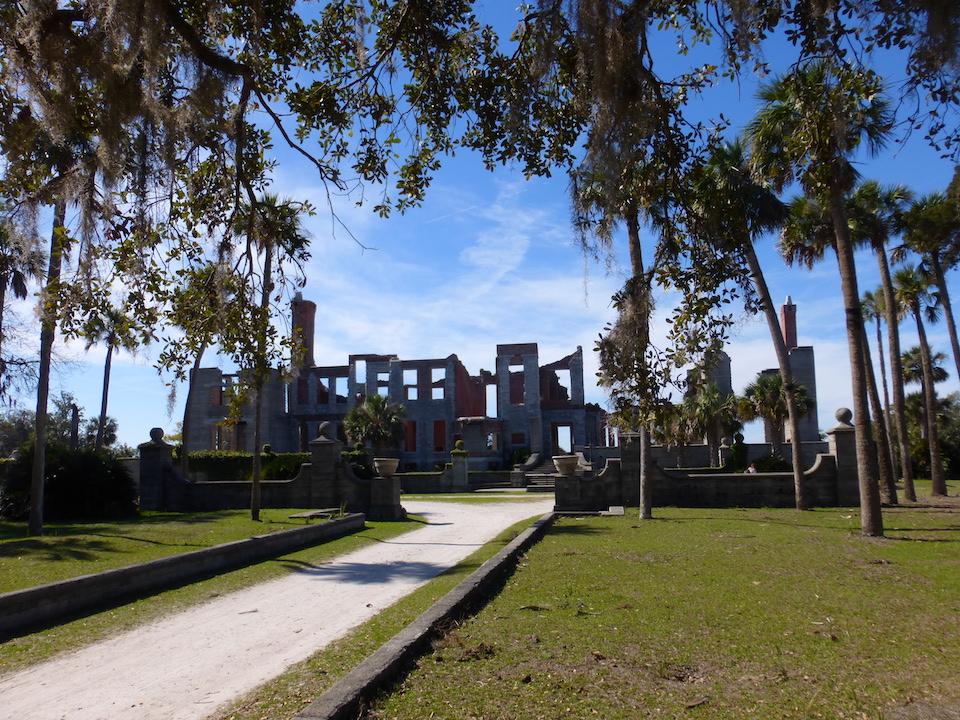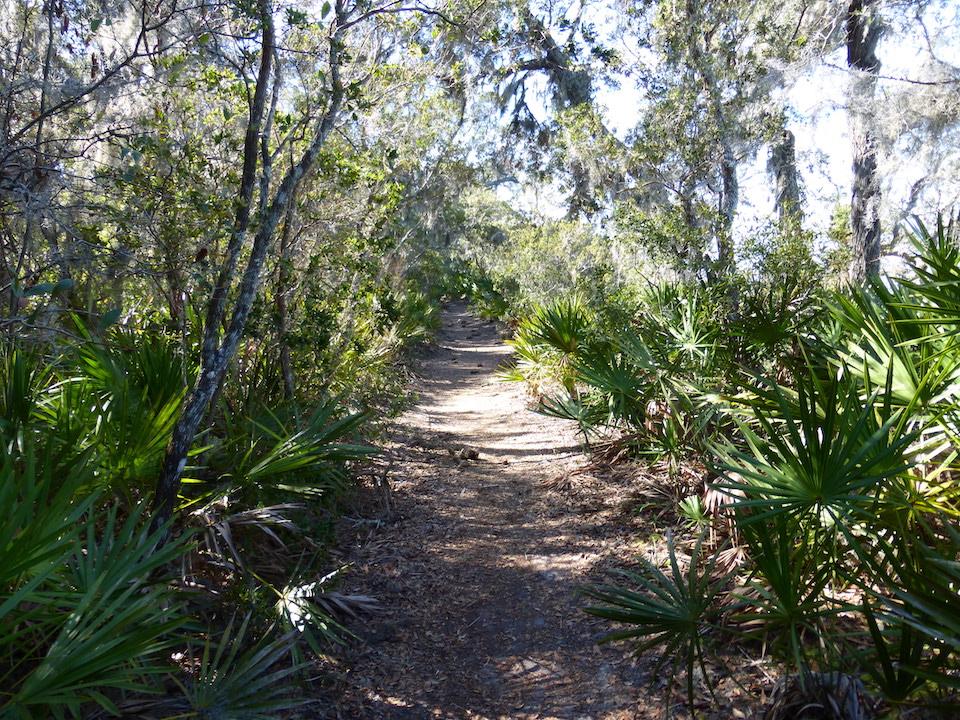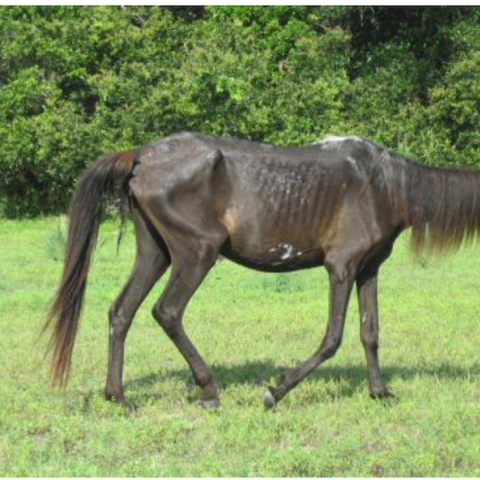
Cumberland Island National Seashore's beaches offer plenty of solitude/David and Kay Scott
Editor's note: While Cumberland Island National Seashore remains open as of publication, all facilities closed on March 18 due to the novel coronavirus. The concessionaire-operated ferry stopped operations on that date.
One of Georgia’s most extraordinary tourist destinations continues to fly under the radar for the majority of travelers, including many of the state’s own residents. People often tell us about their enjoyable visit to the city of Savannah when we comment we live in the Peach State. Also mentioned, although less frequently, are Callaway Gardens, President Jimmy Carter’s hometown of Plains, Jekyll Island, and Saint Simons Island, four popular Georgia destinations. It is not unusual to hear some negative comments about maneuvering Atlanta’s Jackson-Hartsfield Airport, but that’s another story.
One Georgia destination we seldom hear about is Cumberland Island National Seashore which, in our opinion, is the state’s single most rewarding destination. Of the many units managed by the National Park Service that we've visited over the years, we have found few that offer a better experience than Cumberland Island. If you don’t want to take our word for it, ask someone else who has been there.
Georgia’s southernmost barrier island offers visitors history, nature, and beauty in as peaceful and uncrowded a setting as will be experienced in any unit of the National Park Service. Wandering the grounds of Thomas and Lucy Carnegie’s fire-damaged mansion is likely to result in an encounter with grazing wild horses, descendants of generations of the animals that have populated the island for hundreds of years.
One of America’s most beautiful Atlantic beaches, often with no one else in sight, rewards strollers with an abundance of sand dollars and shells. Visits to the northern portion of the island offer visitors the opportunity of stepping inside the intimate First African American Church where on a September day in 1996 John Kennedy, Jr. married Carolyn Bessette.
Cumberland Island is a world away from what most of us have experienced in our nation’s more popular national parks.
Cumberland Island, at 36,000 acres, is the largest and southernmost of Georgia’s 15 barrier islands. While many of the islands have been heavily developed, Cumberland largely remains in its natural state. The island has served as home to Native Americans, Spanish priests, British soldiers, and plantation owners.
Thomas Carnegie (sibling of the more famous Andrew) acquired property on the island in the early 1880s and began construction of a mansion he named “Dungeness” in 1884. Carnegie’s wife, Lucy, continued to live in the mansion where she raised their nine children following her husband’s 1886 death. She built five additional mansions for her children and resided in Dungeness until her death in 1916. The unoccupied mansion burned in 1959. The remains have been stabilized by the National Park Service and serve as a popular stop for island visitors.

Thomas Carnegie's Dungeness Mansion, which burned in 1959, is one of the seashore's attractions/David and Kay Scott
The island can be reached only via boat. A scheduled National Park Service concessionaire-operated 150-passenger ferry provides service twice daily from the small coastal town of St. Marys, Georgia. Daily departures (March through September) for the 45-minute ferry ride to the island are at 9 a.m. and 11:45 a.m. Returns to St. Marys are at 10:15 a.m., 2:45 p.m. and 4:45 p.m. Service is reduced during the remainder of the year. Reservations are advised and available by calling (877) 860-6787, or online at www.cumberlandislandferry.com. Round-trip tickets are $30 adults, $28 seniors, and $10 children 5 to 15 years of age. Children under 5 are free.
Cumberland Island is ideally a two-day park. A guided tram tour ($45 per person) consumes most of a day exploring the northern portion of the island and is the only practical way for visitors to access this section of the island. It includes an hour guided tour of Plum Orchard, the mansion built in 1898 by Lucy Carnegie for her son George and his wife. Another stop is the First African Baptist Church where John F. Kennedy, Jr. was married. It also passes Stafford Mansion that remains in the Carnegie family and serves as home to the caretaker of the family’s remaining properties.
An additional day is required to explore on foot the southern portion of the island. This includes checking out the stabilized remains of Dungeness, the original Carnegie mansion, strolling the beautiful beach, walking the trails, and marveling at the impressive live oak trees. A day exploring the southern portion of Cumberland Island is likely to be one of the most pleasurable experiences of your life.
The national seashore has two developed and three wilderness campgrounds, each with a maximum stay of seven consecutive days. The most popular of the developed campgrounds is Sea Camp, which has 18 sites a half-mile from the Sea Camp Dock. Carts are available at the dock for campers to transport their camping gear to the campground.
For the more affluent, Greyfield Inn, one of the remaining historic Carnegie mansions, operates as a bed and breakfast offering guest rooms in the $700-$775 per night range, a price that includes meals and island tours. The Greyfield Inn boat departs from Fernandina Beach, Florida. Visitors of modest financial means will find motels and bed and breakfasts are available at reasonable prices in St. Marys or nearby Kingsland.
Unless staying at the inn, visitors must bring their own food and beverages as neither is available on the island. Mosquito repellent is also a must, and visitors should strongly consider wearing long-sleeve shirts and long pants.
The best times to visit are spring or fall weekdays when visitation is lighter, temperatures tend to be moderate, and mosquitos and no-see-ums don’t seem quite as hungry.
David and Kay Scott live in Valdosta, GA and are authors of Complete Guide to the National Park Lodges (Globe Pequot).

Campers use hand-drawn carts to haul their gear from boat dock to Sea Camp/David and Kay Scott


 Support Essential Coverage of Essential Places
Support Essential Coverage of Essential Places







Comments
What a delight to find an unspoiled vacation spot with such a charming history. It is a destination we can put on our list for the post virus era we hope to come soon.
We visited in celebration of birthday, just mystic....nature in its finest element. I will surely come back for a visit, might become an annual trip.
It was absolutely beautiful there. The nature,horses and the beach are amazing and such a delight to see. We hiked 4.3 miles and there was so much to see. The ferry ride was about 45 minutes there and back and you had to wear a mask. I did have a friend tag along with me home a friendly tick!!! So make sure you check your body over after your trip ends. We will definitely be back in the fall. Enjoy!!!!
Georgia beaches are wonderful and I'm hoping to visit Cumberland next. Last August, we got to visit Tybee and had an amazing time. https://www.visitsavannah.com/tybee-island-savannahs-beach The island has a low-key vibe, lots of public beach access and plenty of great inexpensive restaurants.
Are there any special COVID-related considerations to visiting?
If you also like camping check https://visittybee.com/camping-rv-parks tybee island campground it is just three blocks from the beach, we really enjoyed our stay at that island because of the many activities it provides. Hope we can go back there soon